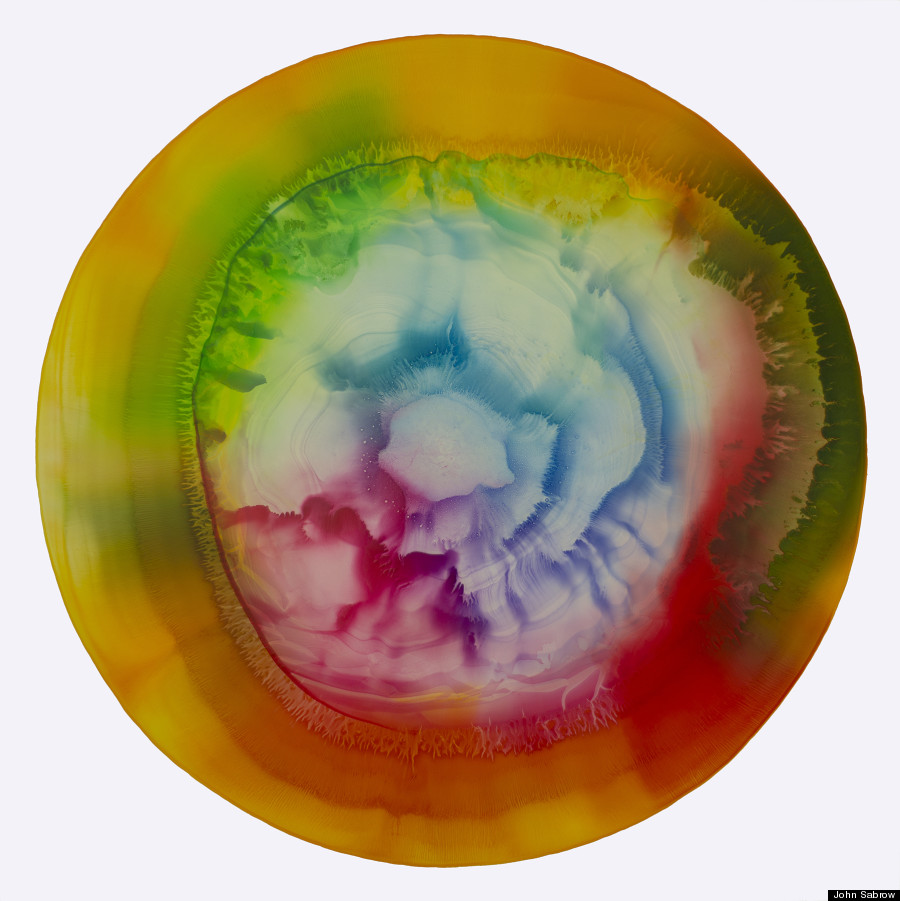Who knew that art and science can become a powerful force when combined together?! John Sabraw, a professor and artist from Ohio, came up with a unique way to raise awareness of the pollution situation in his state. Sabraw decided to produce his own pigments from iron runoff which was accumulating in the Ohio River from abandoned coal mines.
The heavy metals usually get washed away by rain, leaving the discharge in streams, which Sabraw uses as his own color pigments. When he paints, all layers in the pigment naturally emerge and blend based on temperature and humidity. Sabraw called naturally occurring patterns in this new form of art Chroma, and the series was exhibited in Chicago as well. Here is one example of Sabraw’s paintings:
Through his paintings, Sabraw expresses ecological instability of the environment that Ohioans live in. This form of art serves as an inspiration for people to go deeper into the meaning of the painting. In addition, it raises curiosity in viewers about our environment and the scientific impact of human actions, which can be expressed through art.
Such a unique form of art is a vivid example of how science and art in collaboration can help address one of the most important issues facing us today, ecological sustainability.
Urban Gateways works to incorporate the arts into science classes at schools all over Chicago. Check out this project by Jillian Gryzlak with fourth-grade students at Carson Elementary:
http://iamurbangateways.org/blog/science-society-arts-integration-at-carson
And check out this gardening project by Sonja Henderson at Greeley Elementary School:

